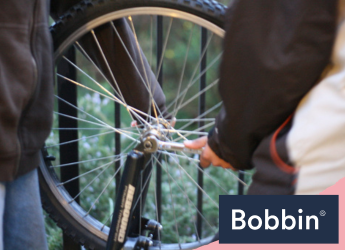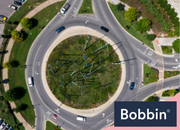How to Fix a BMX Bike?
We understand the frustration when your BMX bike isn’t performing its best. So, in this guide, we empower riders of all levels with the knowledge and skills to address this situation. From simple adjustments to more complex repairs, we’ll walk you through each step. Let’s get into it!
Essential Tools and Materials
Like any bike repair, e.g., fixing a flat bike tyre, having the right tools at your disposal is crucial. Here’s a quick list to get you started:
- a multi-tool with various wrench sizes
- tyre levers
- a chain breaker
- adjustable wrenches
- screwdrivers
- a bike pump
Additionally, spare parts for bikes, such as inner tubes, will prove invaluable. These essentials will form the foundation of your repair kit. They will enable you to tackle a range of common BMX bike issues efficiently. Now, equipped with the essentials, let’s explore BMX bike repair to keep your ride smooth.
Pre-Check Inspection

Before hitting the BMX track, a pre-ride inspection is a must. Start by checking your tyres for proper inflation. You’ll want to make sure they’re free from visible damage. Next is to examine the brake system. Confirm that they engage smoothly and that the pads aren’t excessively worn. Tighten any loose bolts, paying attention to the handlebars, stem, and pedals. Evaluate the chain for proper tension and lubrication. Listen for unusual sounds that may indicate issues with bearings or the drivetrain.
Performing bike safety check isn’t just a routine but also a way to spot and fix issues before they get worse. It prevents surprise breakdowns and keeps your BMX bicycle in great shape. A bit of attention before your ride goes a long way in maintaining your bike’s performance and lifespan.
Common BMX Bike Issues and Solutions
Here, we’ll explore common problems and give you practical solutions to keep your BMX bike in shape:
Flat tyre repair

One of the most common challenges riders face is a flat tyre. Start by locating the puncture, then use tire levers to remove the tire. Inspect the inner tube, patch any holes, and reassemble the tire. Finish by inflating to the recommended pressure. This skill is fundamental for any rider. It ensures you can swiftly overcome the inconvenience of a flat tire and get back to enjoying your ride.
Adjusting brakes for optimal performance

Effective brakes are crucial for safety and control. Begin by examining brake pads for wear and alignment. Adjust the cable tension for optimal responsiveness. Ensure the brakes engage smoothly without rubbing on the wheel. These easy steps on how to fix bike brakes guarantee your brakes function at their best. They provide the stopping power needed during your BMX adventures!
Tightening loose bolts and components
BMX bikes undergo significant stress, often resulting in loosened bolts. Check the handlebars, stem, pedals, and other components for signs of play or looseness. Use the appropriate tools to tighten them securely. This simple yet crucial maintenance task ensures your bike remains structurally sound. Ultimately, it enhances overall safety and performance.
Addressing chain issues and proper lubrication

(Image Credit: Wikimedia Commons)
A smoothly functioning chain is vital for an efficient ride. Inspect the chain for wear and tension regularly. Address any issues promptly by adjusting the tension or replacing worn links. Additionally, proper lubrication is key to preventing rust and ensuring smooth movement. Add chain maintenance to your routine to maintain optimal performance.
Top tip: Here’s how to oil a bike chain.
Fixing issues with pedals and grips
Loose or damaged pedals and grips can compromise your control and comfort. Regularly check for any play in the pedals and tighten them as needed. Inspect grips for wear and tear, replacing them if necessary. These adjustments contribute significantly to the handling and feel of your BMX bike.
Advanced Repairs (Optional)
Looking for more advanced BMX bike maintenance? This section offers a glimpse into sophisticated repairs. Each is accompanied by a step-by-step guide, ensuring clarity and ease of execution.
Hub overhaul
The hub is a critical component influencing your BMX bike's smooth operation. A thorough overhaul involves more than just disassembling the hub. The process ensures optimal performance and prevents wear and tear for your hub. Here’s a step-by-step guide:
- Begin by removing the wheel and taking apart the hub carefully.
- Clean all components thoroughly. Remove old grease and inspect for any signs of damage.
- Apply fresh, high-quality lubricant to bearings and other moving parts.
- Reassemble the hub, ensuring proper adjustment and smooth rotation.
Wheel truing

(Image Credit: Wikimedia Commons)
Achieving precision in wheel alignment is crucial for a smooth and balanced ride. Wheel truing involves adjusting spoke tension to eliminate wobbles. This also ensures each wheel spins true. This enhances the bike’s performance and prevents issues such as uneven tire wear.
To achieve precision in motion:
- Identify areas of the wheel that require adjustment. Do so by spinning it and observing any wobbles.
- Use a spoke wrench to adjust the tension of specific spokes. Focus on those contributing to the imbalance.
- Gradually tighten or loosen spokes to straighten the wheel, frequently checking for improvements.
- Continue adjustments until the wheel spins true without wobbling.
Bottom bracket replacement
The bottom bracket plays a pivotal role in the bike’s drivetrain. It connects the crankset and allows smooth pedalling. Upgrading or replacing the bottom bracket can significantly enhance overall bike efficiency. This is particularly vital for riders seeking improved power transfer and reduced friction.
Here’s how to enhance its efficiency:
- Remove the crankset and existing bottom bracket using appropriate tools.
- Clean the bottom bracket shell thoroughly and inspect it for any damage.
- Install the new bottom bracket, ensuring proper threading and alignment.
- Reattach the crankset, applying appropriate torque to secure it in place.
These guides empower experienced riders to undertake advanced BMX bike repairs with confidence. Beneficial but not mandatory, so don’t worry if you’re unfamiliar with such tasks. Getting assistance from a bike mechanic is always smart for accuracy and safety.
Round-up
Mastering BMX bike repairs transforms you into a more confident and self-sufficient rider. Each task deepens your connection with your two-wheeled companion.
Take good care of you or your Kid's BMX bike for a smooth and safe ride. Enjoy the satisfaction of maintaining peak performance. Embrace the joy of troubleshooting and fine-tuning, making your BMX adventures more thrilling!
Discover a diverse selection of bicycles at Bobbin, catering to kids and adults. Explore our latest additions, including the Shadowplay 20 and Shadowplay 24 models.
Up next on your reading list: What Size Wheels Do BMX Bikes Have?








